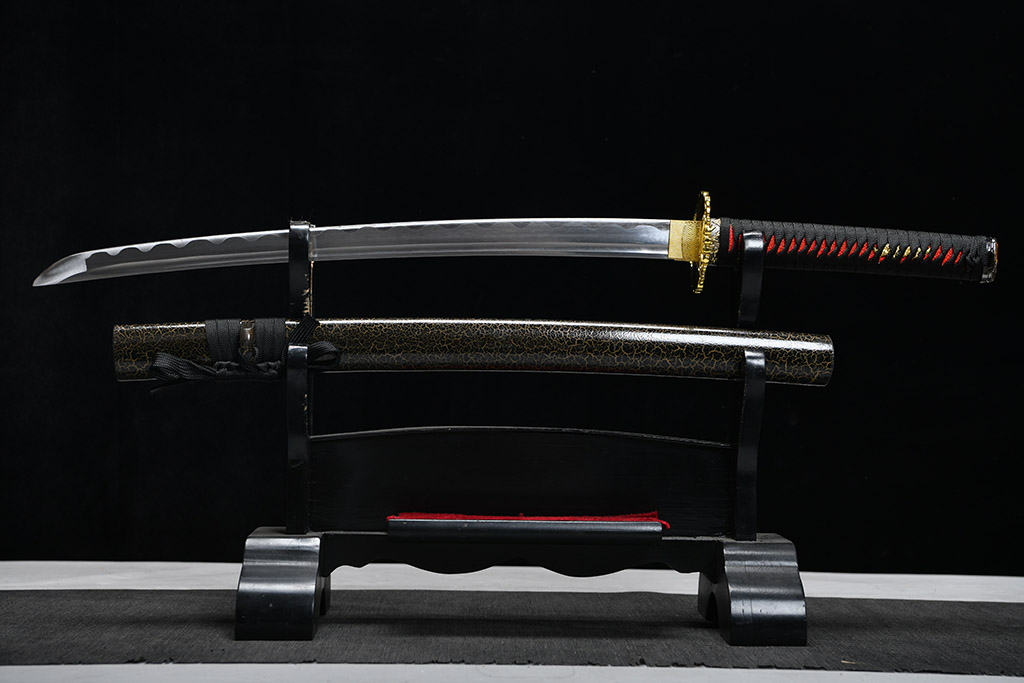Understanding the Wakizashi: A Primer for the Uninitiated
What Is a Wakizashi?
The wakizashi is a traditional Japanese sword with a distinct look and size. Samurai used it as a backup weapon. It is shorter than the main katana. The blade's length can vary, but it is between 30 and 60 cm. This sword was part of the samurai's 'daisho' set. It is still popular with collectors and history buffs today.

The Evolution of the Wakizashi Blade
The Wakizashi blade did not emerge formed. It evolved over time. This evolution reflects shifts in warfare and social customs in Japan. At first, Wakizashi was like tantos. Later versions grew longer and closer to Katanas. In the 15th century, they became part of the Samurai's Daisho. This pair was a symbol of class and warrior status. Makers refined Wakizashi blades to be more than backup swords. They became works of art. Their size was perfect for close-quarters combat. In times of peace, they served as a sidearm for daily wear. The Wakizashi's story is a journey from utility to symbolic prestige.
The Wakizashi in Historical Context: A Must-Know for Collectors
The Birth of the Wakizashi: Historical Origins
The wakizashi did not appear; it has deep roots. Born from the need for a versatile weapon, it emerged in the Muromachi period (1392-1573). Crafted with the same methods used for longer swords, it offered samurai a more compact choice. The wakizashi was born from functional necessity and samurai custom. Wearing the katana served as a status symbol. This pairing, known as 'daisho', signified a warrior's honor. Understanding its origins helps collectors appreciate its place in history and art.
The Wakizashi's Role in Japanese History and Culture
The Wakizashi is woven into Japan's history and culture. It emerged in the Muromachi period (1392–1573) as a sidearm for samurai. Unlike the Katana, it allowed swift indoor movement. In the Edo period (1603–1868), it was part of the official attire of samurai, symbolizing their status. The Wakizashi was also a tool for 'seppuku' — a ritual suicide as an act of honor. This blade was not a weapon; it embodied the Bushido code — the way of the warrior. Thus, its cultural impact extends beyond combat to ethical and social significance.
Why the Wakizashi Remains a Staple in Modern Collections
The Wakizashi's Aesthetic Appeal
The Wakizashi still captivates many today, and one major draw is its unique beauty. The Wakizashi's blade is shorter than the Katana's. This allows for more detailed craftsmanship. Artists often carve elaborate designs into the Wakizashi’s tsuba (guard) and saya (scabbard), making each piece a work of art. The blend is harmonious. It mixes function and intricate design. This blend keeps it a jewel in modern collections. Its small size adds to the charm. It also shows the skill needed to make such a splendid piece using traditional sword-making techniques. The Wakizashi is not a weapon; it's a canvas that bears the marks of centuries-old Japanese artistry.
The Value of Wakizashi: A Collector's Perspective
The value of the wakizashi in modern collections is immense. Collectors see beyond mere aesthetics. They treasure the blade's deep history and craft. To collectors, each wakizashi tells a unique tale. Its size, contours, and markings reveal its era and maker. These swords are not antiques. They're pieces of history, art, and culture. They symbolize the samurai spirit. Collectors believe the wakizashi embodies tradition and Japanese craftsmanship. As such, they often hold their value or even appreciate it over time. This makes them a worthy investment. Yet, the wakizashi's worth goes beyond money. It offers a connection to a proud, honorable past. Thus, its value remains high in enthusiasts' and collectors' hearts.


